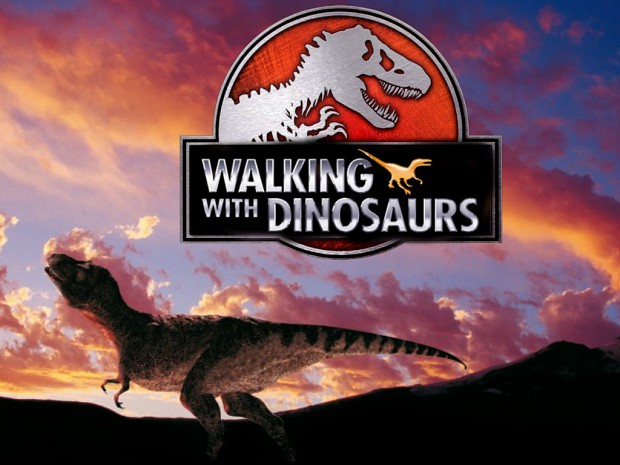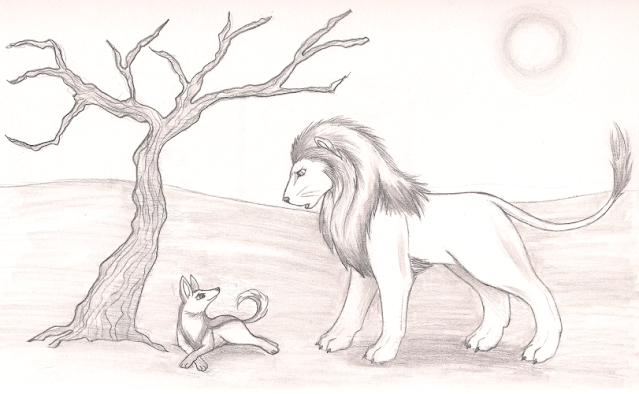Similarities between Jurassic Park and Walking With Dinosaurs
Jurassic Park and Walking With Dinosaurs both depict the
most successful animals in prehistory, the dinosaurs. However Jurassic Park
being based on a novel by Michael Crichton gives not only an idea of what could
happen if dinosaurs were brought back to life but also what may happen if
dinosaurs and man encountered each other while Walking With Dinosaurs is a more
accurate description of what dinosaurs might have been like and is a natural
history programme. However in many a way, the pattern in which both these
series were made is similar, especially the fact that in a way both are indeed
about being near dinosaurs and thus ‘walking with them’, only that Jurassic
Park presents humans encountering dinosaurs while Walking With Dinosaurs
presents a point of view of a human in the time of the dinosaurs
Inspiration
Jurassic Park started out as a novel in 1990 by Michael Crichton about a disastrous attempt to create a theme park of cloned dinosaurs. It was not about dinosaurs alone however but also what the idea of cloning may be like which referenced Crichton’s main genre as an author, science fiction. However Crichton himself was fascinated by dinosaurs all his life and while his story initially started out as a screenplay from a child’s point of view about a graduate student who cloned a pterosaur, at the advice of his peers, he made it into a story for adults. Steven Spielberg who acquired the film rights to the novel from Crichton shortly before its publication was also fascinated by dinosaurs even before his knowledge of the novel and made the film version, omitting certain parts of the novel from the film due to the novel being fairly long. Following the success of both the film and the novel, while Steven Spielberg was initially hesitant to do another Jurassic Park film, he realized how much fun he had while making the film and suggested Michael Crichton to do a sequel to his novel, something that other fans of Crichton suggested as well, which prompted Crichton to write the sequel The Lost World which he borrowed from the novel of the same name by Arthur Conan Doyle; The Lost World is also thought to be an inspiration for Jurassic Park. Steven made the second book into a film as well
Jurassic Park started out as a novel in 1990 by Michael Crichton about a disastrous attempt to create a theme park of cloned dinosaurs. It was not about dinosaurs alone however but also what the idea of cloning may be like which referenced Crichton’s main genre as an author, science fiction. However Crichton himself was fascinated by dinosaurs all his life and while his story initially started out as a screenplay from a child’s point of view about a graduate student who cloned a pterosaur, at the advice of his peers, he made it into a story for adults. Steven Spielberg who acquired the film rights to the novel from Crichton shortly before its publication was also fascinated by dinosaurs even before his knowledge of the novel and made the film version, omitting certain parts of the novel from the film due to the novel being fairly long. Following the success of both the film and the novel, while Steven Spielberg was initially hesitant to do another Jurassic Park film, he realized how much fun he had while making the film and suggested Michael Crichton to do a sequel to his novel, something that other fans of Crichton suggested as well, which prompted Crichton to write the sequel The Lost World which he borrowed from the novel of the same name by Arthur Conan Doyle; The Lost World is also thought to be an inspiration for Jurassic Park. Steven made the second book into a film as well
Tim Haines, the director and producer of Walking With
Dinosaurs was inspired by the film version of Jurassic Park and three years
after the film’s release conceived an idea about a dinosaur-centric documentary
along the lines of a wildlife-programme since Jurassic Park had revived a
public interest in prehistory. The makers of Walking With Dinosaurs tried to
rely less on what Jurassic Park had done as they wanted to remain faithful to
what dinosaurs might have really been like in real life and they looked to the
first film adaptation of (Sir) Arthur Conan Doyle’s novel The Lost World as
well as visiting Crystal Palace Parks in London where magnificent but
inaccurate descriptions of dinosaurs and other prehistoric animals were built
in the early 1850s
Production Companies
Both Jurassic Park and Walking With Dinosaurs are produced and distributed by popular companies, the former by Universal Studios and the latter by BBC. However Universal Studios is a film company while BBC is a television company and thus Jurassic Park was a full-length feature film while Walking With Dinosaurs was a six-part television series. Jurassic Park does not feature any narration unlike Walking With Dinosaurs which is done so by Kenneth Branagh. Interestingly, Morgan Freeman turned down the role of Ray ‘John’ Arnold in Jurassic Park, a role essayed by Samuel L. Jackson. A similar notion happened with Walking With Dinosaurs when David Attenborough turned down the offer to narrate the series and was replaced by Kenneth
Both Jurassic Park and Walking With Dinosaurs are produced and distributed by popular companies, the former by Universal Studios and the latter by BBC. However Universal Studios is a film company while BBC is a television company and thus Jurassic Park was a full-length feature film while Walking With Dinosaurs was a six-part television series. Jurassic Park does not feature any narration unlike Walking With Dinosaurs which is done so by Kenneth Branagh. Interestingly, Morgan Freeman turned down the role of Ray ‘John’ Arnold in Jurassic Park, a role essayed by Samuel L. Jackson. A similar notion happened with Walking With Dinosaurs when David Attenborough turned down the offer to narrate the series and was replaced by Kenneth
Production dates
Since Jurassic Park was published in 1990 and had its film rights acquired before and during its publication thanks to Steven Spielberg, the director began to storyboard the novel and the author of the book Michael Crichton was paid to write a screenplay of his novel. Shortly after that Spielberg approached Industrial Light and Magic who had worked on the Star Wars films and four of its leading agents, Stan Winston who would design the dinosaurs, Phil Tippet who created models from which the designs were based, Michael Lantieri who would supervise the actions of these elements and Dennis Muren who would be responsible for creating the CGI dinosaurs. After a test footage by ILM was shown to Spielberg of a Tyrannosaurus chasing a herd of Gallimimus, both the dinosaurs and the scene appearing in the film, filming took place between August 1992 and November 1992 while post-production occurred in May of 1993 shortly before the film’s release although Spielberg himself was not present due to filming Schindler’s List based on the autobiography Schindler’s Ark about German businessman Oskar Schindler who saved 1100 Jews from being persecuted by Nazis
Since Jurassic Park was published in 1990 and had its film rights acquired before and during its publication thanks to Steven Spielberg, the director began to storyboard the novel and the author of the book Michael Crichton was paid to write a screenplay of his novel. Shortly after that Spielberg approached Industrial Light and Magic who had worked on the Star Wars films and four of its leading agents, Stan Winston who would design the dinosaurs, Phil Tippet who created models from which the designs were based, Michael Lantieri who would supervise the actions of these elements and Dennis Muren who would be responsible for creating the CGI dinosaurs. After a test footage by ILM was shown to Spielberg of a Tyrannosaurus chasing a herd of Gallimimus, both the dinosaurs and the scene appearing in the film, filming took place between August 1992 and November 1992 while post-production occurred in May of 1993 shortly before the film’s release although Spielberg himself was not present due to filming Schindler’s List based on the autobiography Schindler’s Ark about German businessman Oskar Schindler who saved 1100 Jews from being persecuted by Nazis
Walking With Dinosaurs also occurred over a three-year period
since the idea was conceived in 1996. Apart from Tim Haines himself, Jasper
James was the main producer and Haines hired effects specialist Mike Milne of
the visual effects company Framestore for the VFX and CGI on the series.
Interestingly Haines did approach ILM to work on the series but the studio
charged $10,000 for every CGI shot which BBC deemed too expensive. Test footage
of cetiosaurus, eustreptospondylus, liopleurodon
and a pterosaur was also shown although two of the animals did
not make it into the final version of the series. Filming occurred for four
months in 1997 and post production was carried out from 1998 to 1999, the
latter year being the airing of the series
Filming Locations
Jurassic Park was mainly filmed on the Hawaiian island of Kauai with additional filming done at Universal Studios and some of the neighbouring islands of Kauai. Walking With Dinosaurs had numerous filming locations such as Chile, New Zealand, New Caledonia, Bahamas and California just to name a few
Jurassic Park was mainly filmed on the Hawaiian island of Kauai with additional filming done at Universal Studios and some of the neighbouring islands of Kauai. Walking With Dinosaurs had numerous filming locations such as Chile, New Zealand, New Caledonia, Bahamas and California just to name a few
Palaeontological help
Jack Horner who inspired the character of Alan Grant in the novel that inspired Jurassic Park (a role that was played by Sam Neill in the film) was the technical advisor on Jurassic Park, encouraging the director and crew to support the real-life notion that dinosaurs are more akin to birds than reptiles
Jack Horner who inspired the character of Alan Grant in the novel that inspired Jurassic Park (a role that was played by Sam Neill in the film) was the technical advisor on Jurassic Park, encouraging the director and crew to support the real-life notion that dinosaurs are more akin to birds than reptiles
However for Walking With
Dinosaurs, a number of palaeontologists such as Michael Benton, Thomas R Holtz Jr., Peter Dodson, Peter Larson, David Martill and James Farlow served
as technical advisors on the programme. During production Steven Spielberg and Tim Haines the directors of Jurassic Park and Walking With Dinosaurs also visited museums to get an idea of dinosaurs although the Walking With Dinosaurs team also looked to historical aspects of dinosaur discovery such as a visit to the crystal palace park in London where beautiful but innacurate depictions of animals from the dinosaur age are exhibited
CGI
Both Jurassic Park and Walking With Dinosaurs are known for their ground breaking techniques in Computer-Generated Imagery or simplistically CGI. A notable pattern in the filming of both was creating a sensation that the animals would later fill into onscreen such as shuffling trees that dinosaurs would move through, splashes in water and lifting objects that would be done by the computer generated characters later on. Puppeteering was done for closeup scenes of certain dinosaurs. However unlike Jurassic Park where the CGI was done a month before the release of the film, Walking With Dinosaurs’ CGI took two years. Another derivation is that while the filmmakers of Jurassic Park put models of dinosaurs known as maquettes into a scanning system to become CGI images, the filmmakers of Walking With Dinosaurs scanned dinosaur models before adding them on the computer screen
Both Jurassic Park and Walking With Dinosaurs are known for their ground breaking techniques in Computer-Generated Imagery or simplistically CGI. A notable pattern in the filming of both was creating a sensation that the animals would later fill into onscreen such as shuffling trees that dinosaurs would move through, splashes in water and lifting objects that would be done by the computer generated characters later on. Puppeteering was done for closeup scenes of certain dinosaurs. However unlike Jurassic Park where the CGI was done a month before the release of the film, Walking With Dinosaurs’ CGI took two years. Another derivation is that while the filmmakers of Jurassic Park put models of dinosaurs known as maquettes into a scanning system to become CGI images, the filmmakers of Walking With Dinosaurs scanned dinosaur models before adding them on the computer screen
Animal comparison
To help understand dinosaur behaviour better, the makers of both Jurassic Park and Walking With Dinosaurs looked to nature for inspiration and studied the movements of animals such as elephants, giraffes, rhinos and ostriches to impose their movements onto the dinosaurs. It was the study of elephants that was the most famous contribution to dinosaur study in Jurassic Park and Walking With Dinosaurs since for the former, the movement of elephants helped in bringing to life the Brachiosaurus. Regarding Walking With Dinosaurs however while the same applied, the focus of episode 2 where the Brachiosaurs appeared was not the Brachiosaurs but the animal’s smaller relative, the Diplodocus so elephant movement was studied in favour of that dinosaur. Other references were birds flying for the movement of the pterosaurs, and orca whales snatching seals as a reference pattern for an eustreptospondylus being snatched by a liopleurodon Yet unlike Jurassic Park, Walking With Dinosaurs did not use human movements
To help understand dinosaur behaviour better, the makers of both Jurassic Park and Walking With Dinosaurs looked to nature for inspiration and studied the movements of animals such as elephants, giraffes, rhinos and ostriches to impose their movements onto the dinosaurs. It was the study of elephants that was the most famous contribution to dinosaur study in Jurassic Park and Walking With Dinosaurs since for the former, the movement of elephants helped in bringing to life the Brachiosaurus. Regarding Walking With Dinosaurs however while the same applied, the focus of episode 2 where the Brachiosaurs appeared was not the Brachiosaurs but the animal’s smaller relative, the Diplodocus so elephant movement was studied in favour of that dinosaur. Other references were birds flying for the movement of the pterosaurs, and orca whales snatching seals as a reference pattern for an eustreptospondylus being snatched by a liopleurodon Yet unlike Jurassic Park, Walking With Dinosaurs did not use human movements
References
Walking With Dinosaurs makes multiple references to Jurassic Park in terms of both the novel and film. Diplodocus in Episode 2 of Walking With Dinosaurs is a close relative of Apatosaurus which featured in the novel and Utahraptor which appeared in Episode 4 is not only related but is similar to Velociraptor in both the novel and the film version of Jurassic Park. Tyrannosaurus, the most famous dinosaur in the world, is the star of both the Jurassic Park novels and the films based on them and much like in those elements where they appear much later on, a similar pattern happening in Walking With Dinosaurs where the final episode features the Tyrannosaurus; Unlike Jurassic Park however, the title of ‘Rex’ or more simplistically ‘T-Rex’ is never applied to Tyrannosaurus in Walking With Dinosaurs. Stegosaurus which is part of Episode 2 of Walking With Dinosaurs did not appear in the first Jurassic Park film but did appear in the novel that inspired the film and much like the sequel novel The Lost World, appeared in its film adaptation as well. Triceratops which appeared in both Jurassic Park novels as well as their sequels had an appearance in the final episode of Walking With Dinosaurs but only as a body being feasted upon by two Tyrannosaurus although the larger and closely related Torosaurus which is similar looking to Triceratops was common throughout the episode. There are further nods to Jurassic Park from Walking With Dinosaurs in terms of conflict. In a scene from the first novel, a Tyrannosaurus hunts and kills a duckbilled dinosaur known as Hadrosaurus which is the namesake of the entire duckbilled dinosaur family much as the final episode of Walking With Dinosaurs where a female Tyrannosaurus kills a Hardosaur known as Anatotitan to break her fast and feed her young. In a scene from the second Jurassic Park novel, a herd of Triceratops successfully defends one of their young against an attack by Velociraptors although despite this being superimposed onto Torosaurus and the raptor Deinonychus (also known as the Dromaeosaur, the name representing the family of this dinosaur and Velociraptor) wherein a Torosaurus herd tries to hold off a pack of Deinonychus from hunting a young Torosaurus, in this case the raptors are successful in killing the youngling. The position of the dead Triceratops in episode 6 of Walking With Dinosaurs closely resembles the position of the sick Triceratops in the film version of Jurassic Park
Walking With Dinosaurs makes multiple references to Jurassic Park in terms of both the novel and film. Diplodocus in Episode 2 of Walking With Dinosaurs is a close relative of Apatosaurus which featured in the novel and Utahraptor which appeared in Episode 4 is not only related but is similar to Velociraptor in both the novel and the film version of Jurassic Park. Tyrannosaurus, the most famous dinosaur in the world, is the star of both the Jurassic Park novels and the films based on them and much like in those elements where they appear much later on, a similar pattern happening in Walking With Dinosaurs where the final episode features the Tyrannosaurus; Unlike Jurassic Park however, the title of ‘Rex’ or more simplistically ‘T-Rex’ is never applied to Tyrannosaurus in Walking With Dinosaurs. Stegosaurus which is part of Episode 2 of Walking With Dinosaurs did not appear in the first Jurassic Park film but did appear in the novel that inspired the film and much like the sequel novel The Lost World, appeared in its film adaptation as well. Triceratops which appeared in both Jurassic Park novels as well as their sequels had an appearance in the final episode of Walking With Dinosaurs but only as a body being feasted upon by two Tyrannosaurus although the larger and closely related Torosaurus which is similar looking to Triceratops was common throughout the episode. There are further nods to Jurassic Park from Walking With Dinosaurs in terms of conflict. In a scene from the first novel, a Tyrannosaurus hunts and kills a duckbilled dinosaur known as Hadrosaurus which is the namesake of the entire duckbilled dinosaur family much as the final episode of Walking With Dinosaurs where a female Tyrannosaurus kills a Hardosaur known as Anatotitan to break her fast and feed her young. In a scene from the second Jurassic Park novel, a herd of Triceratops successfully defends one of their young against an attack by Velociraptors although despite this being superimposed onto Torosaurus and the raptor Deinonychus (also known as the Dromaeosaur, the name representing the family of this dinosaur and Velociraptor) wherein a Torosaurus herd tries to hold off a pack of Deinonychus from hunting a young Torosaurus, in this case the raptors are successful in killing the youngling. The position of the dead Triceratops in episode 6 of Walking With Dinosaurs closely resembles the position of the sick Triceratops in the film version of Jurassic Park
Sound
Of course no-one knows what dinosaurs sounded like so the team of Jurassic Park judging by the nature of the animals went out and recorded various animal sounds. The most notable of these was for the two stars of Jurassic Park, the Velociraptor and the Tyrannosaurus; the sounds for the former were done by a mix of a dolphin’s scream and a walrus’ bellow while the sounds of the latter was an elephant mixed with a tiger. Walking With Dinosaurs tried not to follow the same example as Jurassic Park and went on to record animals that were not used as examples in Jurassic Park. The Tyrannosaurus for example was a mixture of a bear and a bird and the raptors were bird screams
Of course no-one knows what dinosaurs sounded like so the team of Jurassic Park judging by the nature of the animals went out and recorded various animal sounds. The most notable of these was for the two stars of Jurassic Park, the Velociraptor and the Tyrannosaurus; the sounds for the former were done by a mix of a dolphin’s scream and a walrus’ bellow while the sounds of the latter was an elephant mixed with a tiger. Walking With Dinosaurs tried not to follow the same example as Jurassic Park and went on to record animals that were not used as examples in Jurassic Park. The Tyrannosaurus for example was a mixture of a bear and a bird and the raptors were bird screams
Music
As with all Steven Spielberg films, the music for Jurassic Park was composed by John Williams. Unfortunately, Spielberg could not be present for the score as he had to fly to Poland to start filming for Schindler’s List. Steven was able to communicate via video to supervise the special effects for Jurassic Park back in the United States but had to be sent audiotapes for the score. On the other hand, Tim Haines and Jasper James both of whom were directors for Walking With Dinosaurs were present for the score which was composed by Ben Bartlett
As with all Steven Spielberg films, the music for Jurassic Park was composed by John Williams. Unfortunately, Spielberg could not be present for the score as he had to fly to Poland to start filming for Schindler’s List. Steven was able to communicate via video to supervise the special effects for Jurassic Park back in the United States but had to be sent audiotapes for the score. On the other hand, Tim Haines and Jasper James both of whom were directors for Walking With Dinosaurs were present for the score which was composed by Ben Bartlett
Jurassic Park premiered on June 11th 1993 to positive reviews and
record crowds. It revived an interest in prehistory particularly dinosaurs. The
same went for Walking With Dinosaurs which aired on 4th October 1999
and ended on November 8th of that year
Accolades
Jurassic Park won three academy awards for Best Sound Mixing, Best Sound Editing and Best Visual Effects. It also received two BAFTA awards in the same categories, the same number imposed on Walking With Dinosaurs which also won two Emmy Awards, the very number of Oscars that Jurassic Park won. Unlike Jurassic Park however, Walking With Dinosaurs also received an Emmy award for its score
Jurassic Park won three academy awards for Best Sound Mixing, Best Sound Editing and Best Visual Effects. It also received two BAFTA awards in the same categories, the same number imposed on Walking With Dinosaurs which also won two Emmy Awards, the very number of Oscars that Jurassic Park won. Unlike Jurassic Park however, Walking With Dinosaurs also received an Emmy award for its score




Comments
Post a Comment